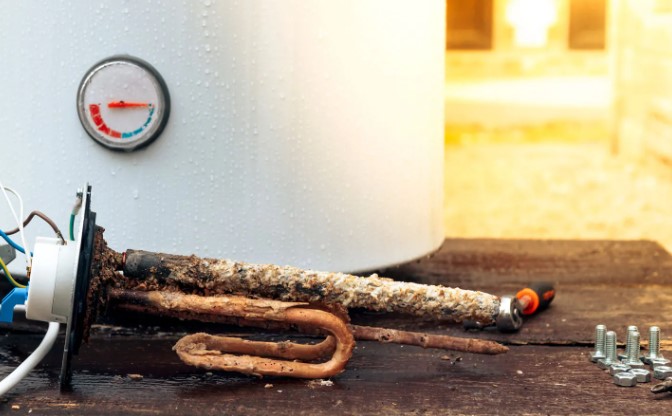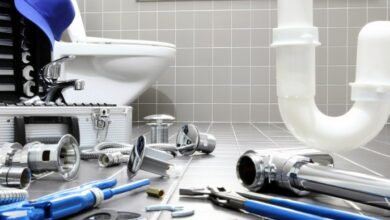Water Heater Installation and Maintenance: Ensuring Efficient Hot Water Supply

A reliable and efficient water heater from RightNOW Plumbing is essential for any household. It provides hot water for various daily activities such as bathing, cooking, and cleaning. Proper installation and regular maintenance are key to ensuring that a water heater operates effectively and has a long lifespan. We will explore the water heater installation process and the necessary maintenance practices to keep the system running smoothly. Understanding these aspects can help homeowners avoid common issues and enjoy a consistent hot water supply.
Water Heater Installation
Installing a water heater involves several critical steps, beginning with selecting the appropriate type and size of the unit. Water heaters come in various types, including tankless, conventional storage tanks, heat pumps, and solar water heaters. Each type has its advantages and is suitable for different household needs. For instance, tankless water heaters provide hot water on demand without storing it, making them energy-efficient and ideal for smaller spaces. Conventional storage tank water heaters, on the other hand, store a large volume of hot water, making them suitable for households with higher hot water demands.
Once the appropriate water heater is selected, the installation begins with preparing the site. This involves ensuring that the location meets the requirements for ventilation, space, and access to water and power sources. If present, The old water heater is safely disconnected and removed. Proper disposal of the old unit is important to avoid environmental harm and comply with local regulations.
The next step is to install the new water heater. A conventional storage-tank water heater connects the unit to the home’s water supply, power source, or gas line. Following the manufacturer’s instructions and local building codes is crucial to ensure a safe and effective installation. Tankless water heaters require additional considerations, such as proper venting and possibly upgrading the electrical system or gas line from gas natural ga to accommodate the unit’s high energy demand.
After the connections are made, the water heater is filled with water, and the system is checked for leaks. The temperature settings are adjusted to ensure the water heater operates within safe and efficient parameters. For gas water heaters, inspecting the venting system to ensure that exhaust gases are safely directed outside the home is essential. Electric water heaters require checking the electrical connections to avoid any potential hazards.
The final step in the installation process is testing the water heater to ensure it operates correctly. This involves running hot water from various faucets and fixtures to check the water temperature and flow rate. Ensuring that the thermostat and safety features function correctly is also important to prevent issues such as overheating or scalding. Once all checks are completed, the water heater is ready for use, providing the household with a reliable hot water supply.
Read also: Detecting Leaks in Florida Pools & Spas: Effective Methods Unveiled
Water Heater Maintenance
Regular maintenance is essential for a water heater’s efficient operation and longevity. One of the most important maintenance tasks is flushing the water heater tank. Over time, sediment and mineral deposits can build up inside the tank, reducing efficiency and potentially causing damage. Flushing the tank involves draining the water and removing these deposits, which helps maintain the heater’s efficiency and prevent issues such as clogged valves or reduced heating performance. This process should be done at least once a year or more frequently in areas with hard water.
Inspecting the anode rod is another critical maintenance task. The anode rod is a sacrificial component that attracts corrosive elements in the water, preventing them from damaging the tank. Over time, the anode rod degrades and must be replaced to protect the tank. Checking the anode rod annually and replacing it when it is significantly corroded can extend the water heater’s life and prevent costly repairs.
Maintaining the temperature settings is also important for efficient operation. The thermostat should be set to a safe and energy-efficient temperature, typically around 120 degrees Fahrenheit. This temperature setting is sufficient for most household needs and helps prevent scalding while reducing energy consumption. Regularly checking and adjusting the thermostat ensures that the water heater operates within optimal parameters.
Inspecting the burner and pilot light is essential for gas water heaters to ensure proper combustion and efficient heating. The burner should be clean and debris-free, and the pilot light should burn steadily with a blue flame. Any burner or pilot light issues, such as a yellow flame or frequent outages, should be addressed promptly to prevent safety hazards and ensure efficient operation.
Electric water heaters require periodic inspection of the heating elements. These elements can accumulate mineral deposits, reducing their efficiency and heating capacity. Checking the heating elements and cleaning or replacing them as needed helps maintain the water heater’s performance. Additionally, ensuring that the electrical connections are secure and corrosion-free is important to prevent potential electrical issues.
Another crucial task is regularly inspecting and maintaining the pressure relief valve. This valve is a safety feature that releases excess pressure from the tank, preventing it from bursting. Testing the valve periodically by lifting the lever and checking for proper operation ensures it functions correctly. If the valve does not release water when tested, it may need to be replaced to ensure the water heater’s safety.
Conclusion
Proper installation and regular water heater maintenance are essential for ensuring an efficient and reliable hot water supply. By following the necessary steps during installation and performing routine maintenance tasks such as flushing the tank, inspecting the anode rod, and maintaining the thermostat settings, homeowners can extend the lifespan of their water heaters and prevent common issues. Understanding the importance of these practices can help ensure that the water heater operates efficiently, providing consistent hot water for daily needs and enhancing the overall comfort and functionality of the home.








